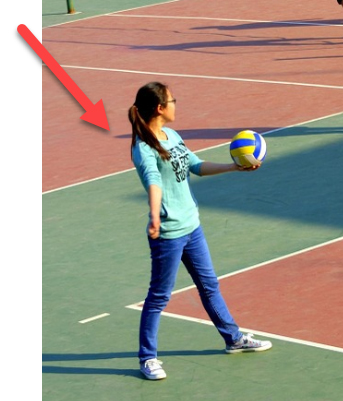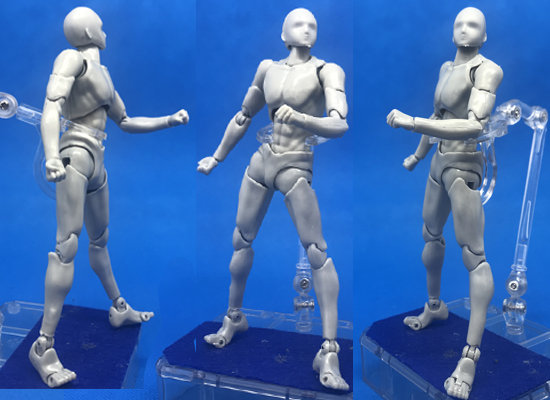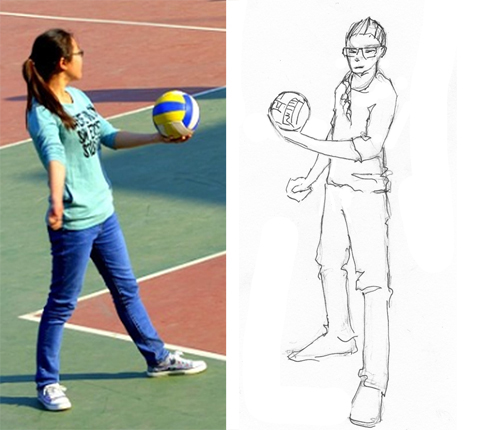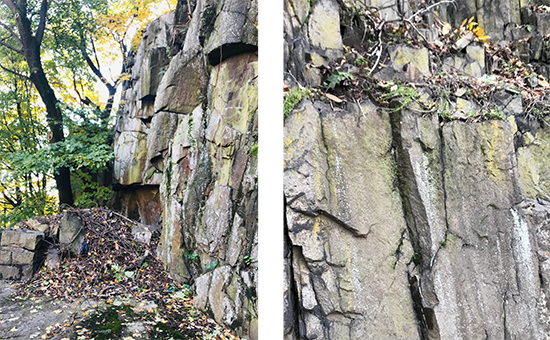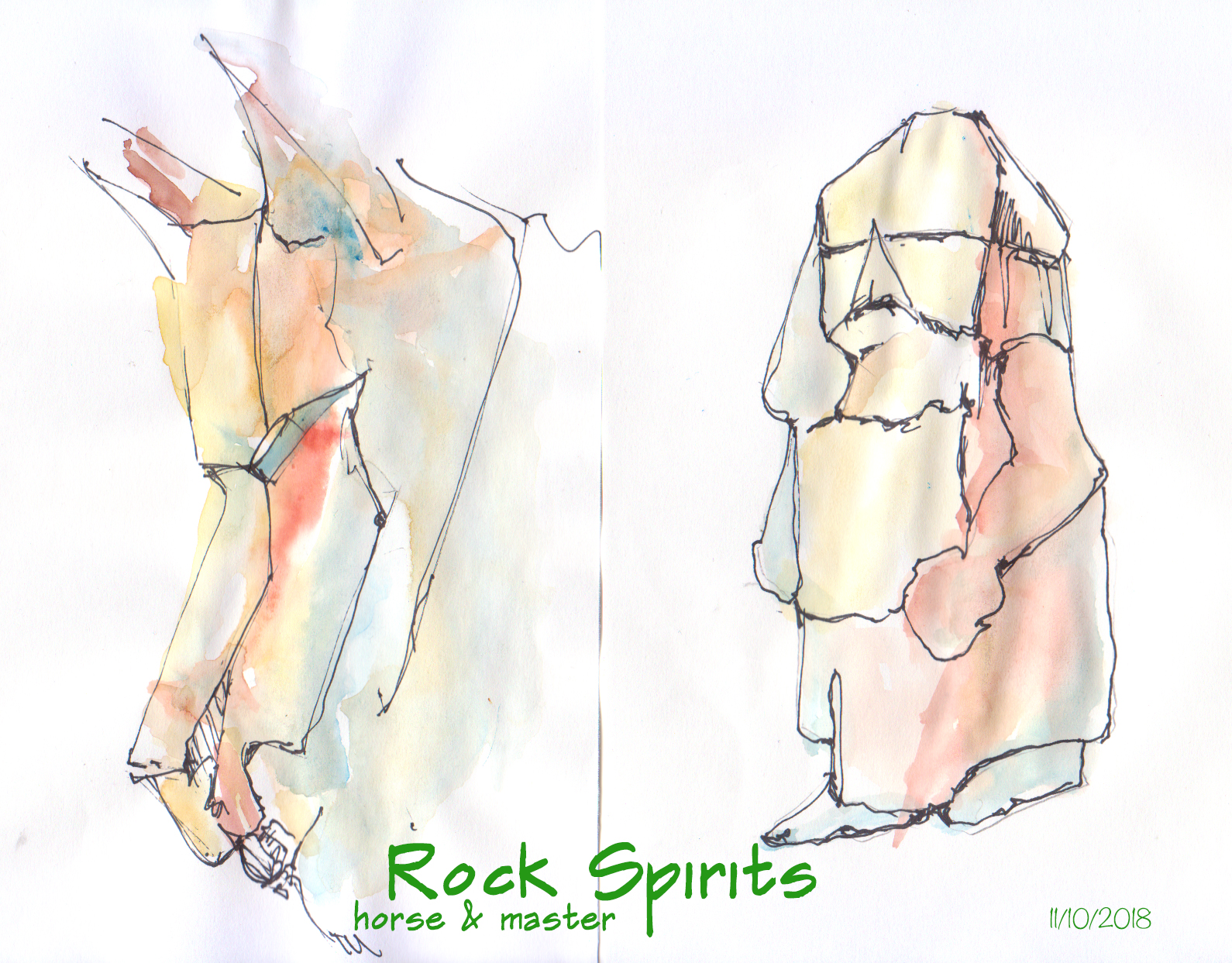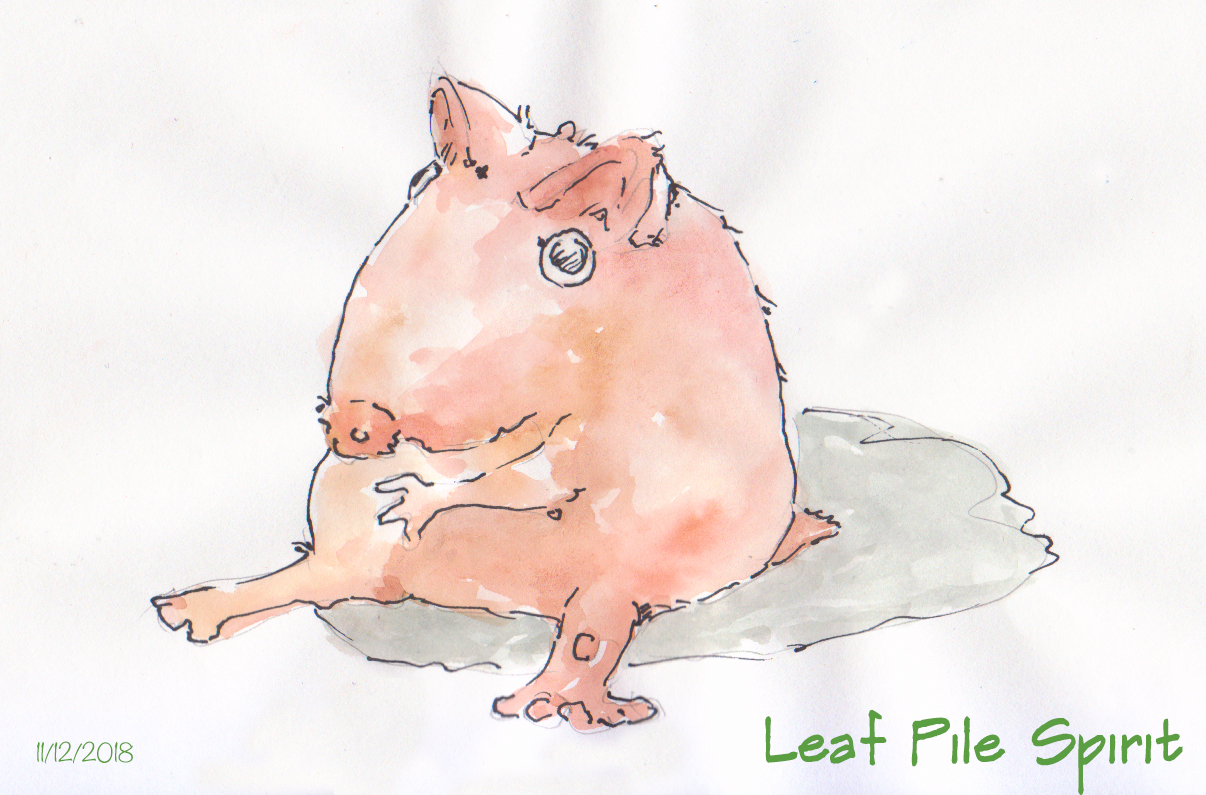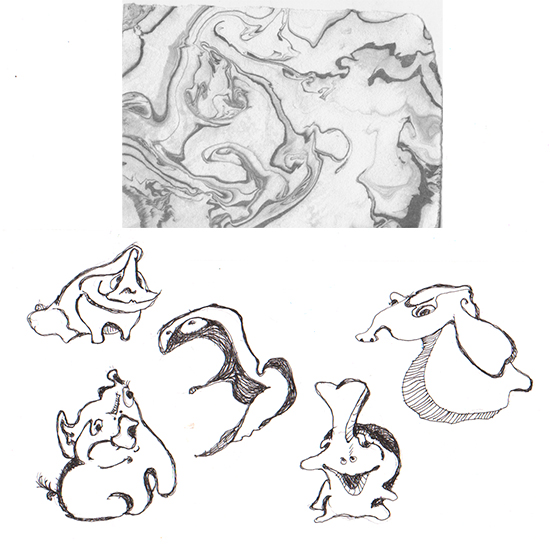Category: Tutorials
How Karen Little Developed Littleviews On-line Shop, Sketch-Views
Comments later in 2020
In June 2020 I started keeping a diary about the process of developing Littleviews’ store, Sketch-Views, which had a soft grand opening in September 2020.
While I deleted diary entries from July on on as most of my time was spent in study and skill upgrades, I though that you might be interested in what was going on in June, especially if you are interested in starting and maintaining your own store.
You can see that some of my ideas changed between then and September. Should you start your own store, go forward slowly, try things, and eliminate what doesn’t work. Keep, of course, what does!
Monday, June 29
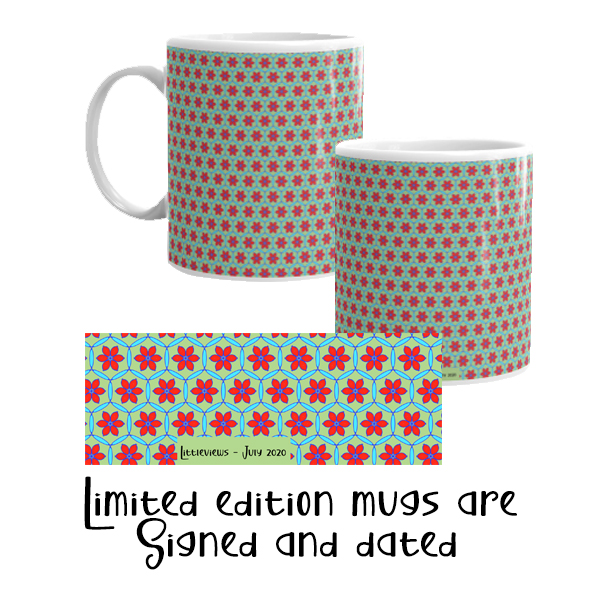 I am still waiting for my scarf samples to arrive so I can plan how to improve designs or start actually promoting them. Half should be here this week but I don’t know when the remainder will arrive.
I am still waiting for my scarf samples to arrive so I can plan how to improve designs or start actually promoting them. Half should be here this week but I don’t know when the remainder will arrive.
While I am looking forward to the September Sketch-Views “Grand Opening,” I’ve started updating everything this past weekend.
Going forward, I am still devoted to daily sketching as well as to developing a PDF catalog on how pet portraits can be used. It might seem like it’s an easy task to distribute a PDF file, but it took a major amount of brainpower to figure out how to do it on the Shopify platform I use for Sketch-Views.
For now, the catalog being developed is called “Creative Expressions.” Click Here to see how catalog delivery is set up.
Monday, June 22
 When I first looked at my stash of “Fat Quarters,” which are quarter-yard pieces used for patchwork and various sewing projects, I was going to give them away.
When I first looked at my stash of “Fat Quarters,” which are quarter-yard pieces used for patchwork and various sewing projects, I was going to give them away.
And then I thought, “I love sketching pet portraits, so why not make pet bandannas out of them?”
This morning I researched pet bandanna patterns and decided that this would be fun to do, so by next Sunday, I will have enough bandannas made for our site’s mascots (4 Doxies who live in Texas), plus my current clients.
I’m still waiting for my scarf and fabric samples to arrive and really can’t do much in terms of posting products on Sketch-Views until I examine them for quality and design balance.
My sample order is for nine scarves in different sizes, but I’ve only received two. Those two, however, give me something to style on Hilda the Head. She seems pleased…
Friday, June 19
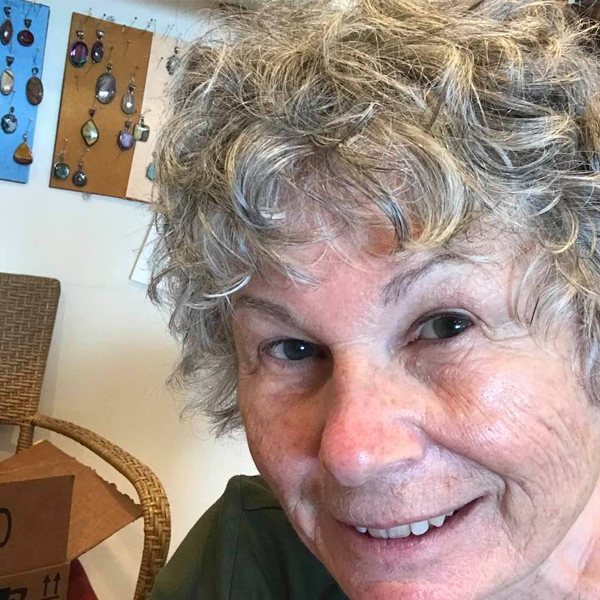 And so, I cut my own hair . . .
And so, I cut my own hair . . .
And I also bought a 2nd wig to demo scarves (and maybe wear myself when the weather is cooler). This purchase might be especially meaningful should I decide to continue cutting my own hair!
In the meantime, I received the first scarf sample yesterday and, unfortunately, I wasn’t impressed. The printing of the scarf was excellent, but a series of lines that were part of the pattern were too think and appeared as light gray broken lines, instead of crisp white.
The rest, however, should be OK, except that the 1.5″ edge treatment I created shrunk to 1″, so in the future, I’ll have to adjust that. Anyway, I can’t wait for the rest to arrive.
Thursday, June 18
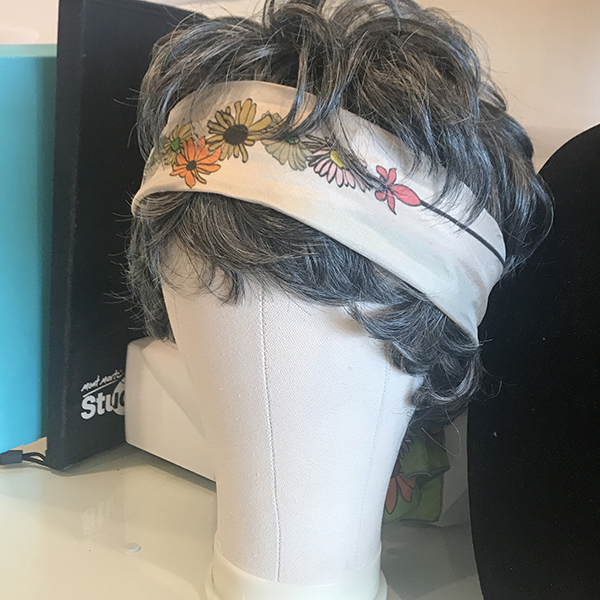 The Coronavirus “lock-down” closed the companies I use for printing scarves and other fabrics. While I started my recent design process in late February, I am still waiting for samples.
The Coronavirus “lock-down” closed the companies I use for printing scarves and other fabrics. While I started my recent design process in late February, I am still waiting for samples.
A “sample” is not a discounted item delivered inexpensively to my door. Samples represent products creators like myself use to evaluate product quality. If I bought these things in large lots, item cost might be discounted, but at one or two pieces per order, samples (whether I like them or not) are a major business investment.
Anyway, as of today, I am still waiting for samples and, if I like them, figure out how to stage them for photos and videos. My new partner, Hilda the Head, is anxiously waiting for new products to show off, too. It is time for a fashion update!
Hilda’s easy hairstyle, however, has influenced my desire to cut my own hair really short. Unfortunately, my hair salon is not yet open due to the pandemic, so on the docket for today, I will cut it myself.
. . . expect photos of my new hair chop later this week.
Saturday, June 13
 The Chinese can teach us many things about the use of hand-held fans. Fans cool the air, provide artistic appeal, and most importantly, prevent stagnant air from settling around us, something to consider as we fight to avoid the transmission of viruses.
The Chinese can teach us many things about the use of hand-held fans. Fans cool the air, provide artistic appeal, and most importantly, prevent stagnant air from settling around us, something to consider as we fight to avoid the transmission of viruses.
While “sheltering in place” limits our exposure to whatever is in the general atmosphere, consider using a simple fan to keep that atmosphere moving at home and when you are out and about.
To that end, I recently purchased 12 folding fans for $7 on Amazon with the idea that I’ll share them with family and friends. These are around 9 inches long and fold flat into the handle, which rotates shut.
I’m so fond of my new fan, in fact, that I’m using it all day long! It moves dust away from my nows, with no electricity or filters required!
Interesting references: “The Cool Story on Chinese Fans,” “Traditional Chinese Fan, an Artistic Symbol of Literati and Social Status,” and for more options on handheld paper fans, check the results of this Google search.
Friday, June 12
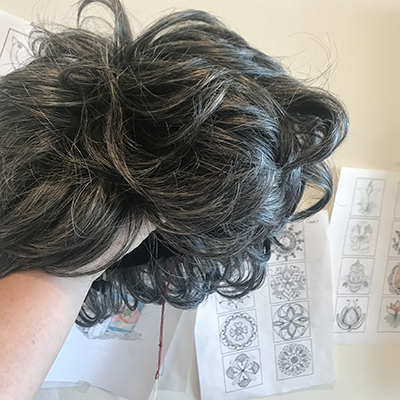 This is a wig I purchased to stage scarves for Sketch-Views photographs. It’s beautiful! It had rave reviews! The hair had similar qualities to mine! And it was only $21, delivered.
This is a wig I purchased to stage scarves for Sketch-Views photographs. It’s beautiful! It had rave reviews! The hair had similar qualities to mine! And it was only $21, delivered.
When I lost all my hair due to cancer, I dutifully visited a local, high-end wig maker and paid almost $500 for one, thinking it would look more natural. It did not.
Anyway, I’m now waiting for a wig-form “block head” upon which I’ll demonstrate the scarves I’ve designed and this wig’s glories. If the images look better than real life, I might soon be wearing this wig, too.
Tuesday, June 9
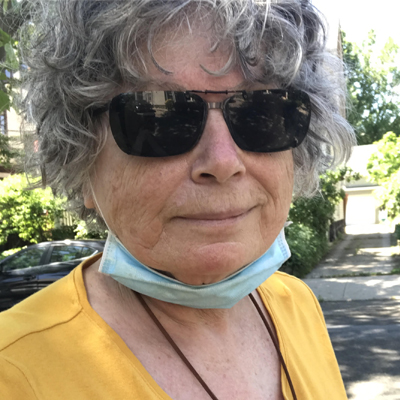 Today is my online diary “kick off” and a celebration of my new mastectomy bra. Both things make me happy.
Today is my online diary “kick off” and a celebration of my new mastectomy bra. Both things make me happy.
It took me 4 years since having my left breast removed to have enough healing to allow anything tight surround my chest. Should you find yourself in my position, don’t rush back to looking normal. Wait until you are completely healed (radiation is worse than the surgery itself).
I’m 76 and am a cancer survivor! And as such, fill my time with lots of artistic projects, which is lucky because for the past three months, New Jersey has been in “lock down” to honor “social distancing.” Ah, the Corona Virus. If it isn’t one life threatening thing, it’s another. The best we all can do is just soldier on!
Anyway, I started Sketch-Views this past January and curating it took a hit when social distancing shut down my vendors. As of now, vendors are starting up again and I’m creating several collections. All should be done by early September.
Questions? Just ask Karen@Littleviews.com
Action Sketching: How to develop your unique artistic style
There are several skills you need to master when seeking to develop your own style. The first is actually drawing “the thing,” whatever it is you want to focus on. The next is determining what tools and medium to use. And the third, how to use them. This article focuses on how to use your tools in order to develop your own style.
Developing Your Style
It is important to be aware of numerous artistic styles and try many of them yourself in order to find the one you like best. While you can do this by drawing many pictures, testing techniques as you go, it is more efficient to try different styles on a single subject so you can more easily compare them and determine which ones you enjoy the most.
To get started, very lightly sketch a subject of your choice. Next, scan or photograph the sketch, then print numerous copies. Below is an example of a very light pencil sketch based on a photo I took of a Shotgun House in New Orleans.
With prints now at hand, finish each one in a different style, such as by cross-hatching, shading, pen work, or even coloring.
The following provides brief examples on how to proceed. The first, partially finished example was done with a micro Uni-Ball pen followed by a print partially finished using a BIC mechanical pencil.
Depending on the paper you use, you can also explore watercolors, acrylics, and even alcohol-based colored markers.
Develop ideas by studying other people’s drawings, then practice using their techniques. By trying numerous techniques on a single subject, you’ll identify which ones you more passionately like doing.
Paper:
The paper you choose is important. Paper with “tooth” is the best to use with a pencil, even inexpensive, mechanical pencils like BICs. The reason is that by repeatedly lightly rubbing over the same area leaves layers of graphite behind, thus developing increasingly dark shades. This cannot be done easily on printer paper, consequently, lines made on printer paper all appear gray, no matter how hard you press or many cross-hatchings you employ.
To save money, practice sketching on printer paper. As you explore new techniques, however, invest in papers more suitable to the tools you prefer using.
Multi-media paper can be used for pencil, pen, and some paints, but it doesn’t come in standard printer paper sizes. To easily solve the problem of transferring your basic sketch to it, without having to consult your printer’s measurement table, tape the multi-media sheet to printer paper, then hand-feed the “set” through your printer, making sure the tape is smoothly pressed down.
Links:
There are several online tutorials classified by medium (such as ink or pencil), technique (cross-hatching or shading), paint (watercolor or markers), and even “mixed medium” that combines many things.
- Cross-Hatching: What is Crosshatching? – Pen and ink drawing for beginners
- Shading: How to Shade with PENCIL for BEGINNERS
- Felt-tip markers: How to Shade With Markers : Drawing & Art
- Micron pens: Hand Lettering with Pigma Micron Pens
- Mixed Media Paper: Use this reasonably-priced paper for pen, pencil, or pencil. Strathmore and Canson both sell it by the pad, however, I prefer Canson’s spiral bound pads.
- Cheap Joe’s Art Stuff – Strathmore
- Cheap Joe’s Art Stuff – Canson
Author:
This article was written by Karen Little as part of an ongoing series of blogs on Action Sketching. Published on Littleviews.com. March 23, 2020.
Reproduction of this article is free to non-commercial websites (or other media) with permission and attributes to Littleviews.com and the article’s author.
All other material on Littleviews (with noted exceptions) is copyrighted on the date of publication or as noted in credits.
Questions? Ask Karen Little at Karen@littleviews.com.
Support Our Mission:
Products sold on Sketch-Views.com contain images exclusively created for Sketch-Views gift products by designer, Karen Little. Revenues support Littleviews’ mission to provide drawing tips and events.
Action Sketching: Changing the perspective of your human subject
Many of us can get good views of sports, but the perspective on how we see the players might not be the way we want to sketch them.
Indoor volleyball, for example, often causes a problem for illustrators because the view of players is from a balcony looking down, rather than seeing players straight on.
In the example above, the volleyball server is seen from a balcony, with the focus on her right shoulder. If you wanted to illustrate aspects of this game, you might prefer action references from photos taken on the floor.
To correct reference shots from the wrong angle, or try to imagine a specific moment from a different view, use a fully-jointed mannequin to depict what you would like to see.
In the photo example below, I set up a mannequin to duplicate the stance of the server. Next, I took multiple photos of the mannequin from straight-on, turning it for each shot.
In the following example, I chose the third pose for my quick sketch as it was the direct opposite of the first.
Could you have used your imagination to sketch a pose directly opposite of the photo reference? Possibly, but for most people, that would be difficult, especially leg placement and body bend.
Working with a Mannequin:
Fully-jointed mannequins are delicate and fall apart easily. To guard against that:
- Loosen joints before bending by heating them with a hair dryer.
- When joints become too loose, tighten them with a tiny screwdriver, like the type used to tighten eyeglass stem joints.
- If joints cannot be tightened (or parts are falling off), reattach them using standard modeling clay.
Links:
- Reference photo of woman serving a volleyball from Pixabay.com.
- Action Sketching: Handling a fully-jointed mannequin, by Karen Little. Littleviews.com
Author:
This article was written by Karen Little as part of an ongoing series of blogs on Action Sketching. Published on Littleviews.com. March 12, 2020.
Reproduction of this article is free to non-commercial websites (or other media) with permission and attributes to Littleviews.com and the article’s author.
All other material on Littleviews (with noted exceptions) is copyrighted on the date of publication or as noted in credits.
Questions? Ask Karen Little at Karen@littleviews.com.
Support Our Mission:
Products sold on Sketch-Views.com contain images exclusively created for Sketch-Views gift products by designer, Karen Little. Revenues support Littleviews’ mission to provide drawing tips and events.
Cartoon Sketching: How to develop your imagination by finding eyeballs
If you have trouble stimulating your imagination, I recommend that you take online classes from Carla Sonheim and her select group of instructors.
While new classes are regularly announced on her website, Carla Sonheim Presents, if you are short of time (or money), just invest in her book, Drawing and Painting Imaginary Animals.
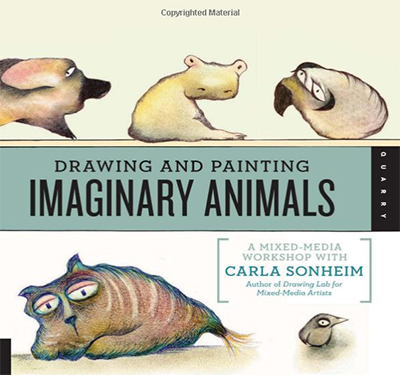 While she teaches multi-media drawing and painting, your main takeaway from this book is learning how to see (and therefore “draw”) imaginary animals that you see almost everywhere you look. The trick is to identify a pair of eyes, then let your imagination see the critter who owns them.
While she teaches multi-media drawing and painting, your main takeaway from this book is learning how to see (and therefore “draw”) imaginary animals that you see almost everywhere you look. The trick is to identify a pair of eyes, then let your imagination see the critter who owns them.
Look anywhere – on walls, floors, tree trunks, stone ledges, and more – to find eyeballs. Start sketching on the spot, or take photos and sketch when you get home.
The examples that follow show you how to proceed. For immediate practice, find eyeballs and even related noses and eyebrows on cliff faces in the Hudson River Palisades.
Here are a few examples of what I saw during a January 2018 stroll. Rough sketches can fill notebooks as well as inspire characters for books and illustrations.
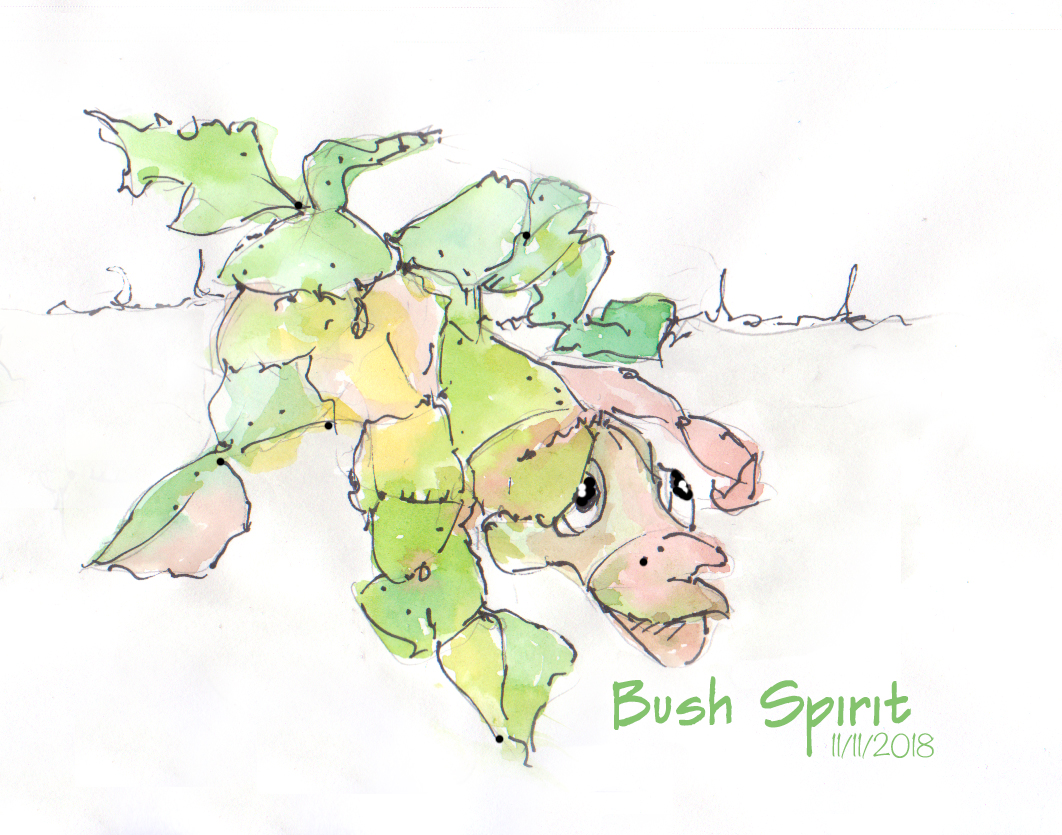 Ever wonder how tribes across the globe came up with their symbolism? Just look into ponds of swirling water and imaginary critters emerge. It is up to you to give them life.
Ever wonder how tribes across the globe came up with their symbolism? Just look into ponds of swirling water and imaginary critters emerge. It is up to you to give them life.
Links:
- Carla Sonheim Presents: Visit this website (and get on her email list) to see class announcements, free art tutorials, and interesting articles.
- Drawing and Painting Imaginary Animals: By Carla Sonheim. This single book will unlock imagination and help you see differently wherever you look.
- Video: Drawing and Painting Imaginary Animals by Carla Sonheim: This video quickly flips through her book. Slow down its speed so you can better see its imagery.
- The topic of developing one’s imagination is of high interest to designers and artists. Google “creating imaginary animals” for many book, video, and website references.
- Hudson River Palisades: Images for your consideration.
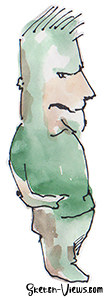 Author:
Author:
This article was written by Karen Little as part of an ongoing series of blogs on Cartoon Sketching. Published on Littleviews.com. March 8, 2020.
Reproduction of this article is free with permission and attributes to Littleviews.com and the article’s author.
All material on Littleviews (with noted exceptions) is copyrighted on the date of publication.
Questions? Ask Karen Little at Karen@littleviews.com.
Support:
Our mission is to help people learn how to sketch, love what they do, and share their sketches with others. It is supported by our gift center on Sketch-Views.com, with products like the one you see at the bottom of this page.
The cartoon on this cup is based on “eyeballs” Karen spotted looking out from a Hudson River Palisades cliff.




